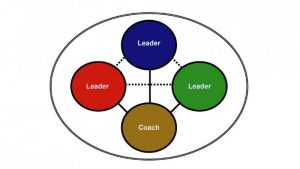Coaching Clusters
As a coach, I have each person prepare individually. Then during a 90-minute session, I coach each person for 30 minutes, leaving a bit of time at the end for prayer and comments from others. Then we rotate to the next person. There are numerous advantages to doing coaching in this way including observation, efficiency, and supportive community..
Observation
When meeting as a coaching cluster, each person not only gets 30 minutes of coaching for themselves, but they also get one hour of observing good coaching. As a coach, you’re helping to train people in coaching. As they develop, you might say to person B: “What would be a good question to ask at this point?” Through observation, participants are being equipped with coaching skills and can then go on to coach others.
Efficiency
Efficiency is another benefit. Because they are only getting 30 minutes of personal coaching, the cost per individual should be less. This opens opportunities for coaching to those with a more limited budget. Additionally, when you cluster people who are on similar journeys aspects of each person’s coaching will be applicable to the others. They learn from one another by hearing what others are working on. The added benefit is that sometimes it is easier to understand concepts you need to grasp as you watch others walk through them.

Supportive Community
I’ve also seen how powerful it is for groups like this to form a supportive community. Depending on the situation, the group could even meet together without the coach to process with each other. It’s a powerful way to get people connected and supporting one another as they work toward their goals.
Coaching Clusters of 3
Although I’ve tried coaching one-on-two, I’ve found that it doesn’t work as well. Invariably, one is doing better than the other or one is more experienced than the other. Coaching two people at the same time creates imbalance and invites comparison. Coaching four at once is too big, unless it’s a team and they’re all focused on the same agenda.
Three seems to be just right.
